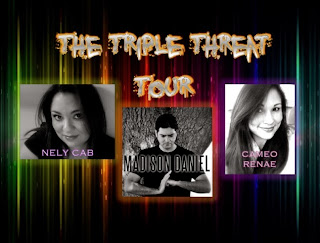By failing to target my audience with my first book, I learned a whole lot more about it than I would have otherwise. So I’m going to do my best to come up with some good questions for you so you don’t make the same mistakes I made.
First I want you to list 10 books you think your target audience loves to read. You need to read these books and study them. No, you are not going to be exactly like these books, but you need to understand what about them your readers love.
Interesting thing you will find is that you fit into your target audience. You should be writing for yourself. The 10 books you pick should be books you already love. Even if you are not the age of the character in your book.
#1. What age should your character be?
The character in your book is the same age as your target audience OR the age your target audience perceives / fantasizes themselves. The young at heart, no matter how old, still love YA books, and there are the young who love older books.
When you put an age on your character, the reader automatically makes certain assumptions. If you break these assumptions, the wrong readers will pick up your books, and you’ll end up with bad reviews.
Age 12 to 14 – Sweet and fun, crushes and adventure. Think Fablehaven by Brandon Mull or the Gallagher Girls series by Ally Carter.
Age 16 – First kisses and dating. Soul Screamers series by Rachel Vincent or Meant to Be by Lauren Morrill or City of Bones by Cassandra Clare would be some good examples.
Age 17 – Still in high school but thinking about college, preparing to become an adult, maybe having their first sexual experience. Like Catching Jordan by Miranda Kenneally or The Crimson Crown by Cinda Williams Chima.
Ages 18 to 23 – College aged, no longer thinking about dating but about settling down, career focused rather than school. This age bracket usually addresses more adult topics: sex, drugs, alcohol, violence. But it is also less explicit than an adult novel. Some authors in this group include Abbi Glines and Cambria Hebert and Airicka Phoenix.
Ages 25 to 35 – This age bracket can include anything from Romance to Erotica or Contemporary to Paranormal. You will have to decide on your genre before you decide where you want to fit your book.
#2. How many POVs should your book have?
One of my early mistakes was to have too many POVs. TEARS (my 1st book) had 4 POVs other than my main character, and one of the biggest complaints was that it had too many.
I should have known better. My biggest complaint about The Wheel of Time is that there were too many POV’s. It seemed like every two-bit character in the world got a chance to tell his side of the story, and the people I WANTED to read about barely got a chance to be seen.
I have since realized that for me and the audience I want to target, two POVs are best. One for the hero and one for the heroine. Best writing groove I’ve ever had.
#3. How much sex should your book have?
People are picky. Some want explicit sexual scenes; others don’t want any. You have to be careful to handle this carefully. Too much, too little, the wrong wording, and you’ll get the wrong audience. Be sure to match the level of sexuality you have with the cover, the blurb, and the age range of your character.
If you make your character 14 and you have too much sexuality, your readers will be upset. If you make your character 18 and don’t have enough sexuality, again your readers will likely not enjoy the book.
#4. How much complexity does your book have?
This is not necessarily a good question. Harry Potter and Fablehaven are written for a younger crowd, but they have enough complexity for an older audience. On the other hand, I’ve read several books for the New Adult crowd that have only a handful of characters and a very straightforward plot.
But what you need to learn from these 10 books is how they handle the complexity. People don’t want plot holes and missing character development. If you can’t handle 100 puppet strings, then don’t write that many puppets into your story.
#5. How should you craft your blurb?
Blurbs bring out important elements that will appeal to a specific crowd. Pay attention to how the blurbs of these 10 books you are studying are crafted to show what is important to that audience.
Example: I’ve seen a lot of blurbs for Romance stories where the first paragraph is about the girl, the second paragraph is about the guy, and the third paragraph is the two of them together.
#6. What elements of a book cover draw you in?
When a reader picks up a book to read the blurb, it’s the cover that drew them in, that made them want to pick up that book. A picture speaks a thousand words, they say, and the cover of your book needs to speak two things to your reader:
(1) I want to be this person for a short while
(2) I want to experience this story
And this is what you need to keep in mind when you design your book cover to target your audience.






























